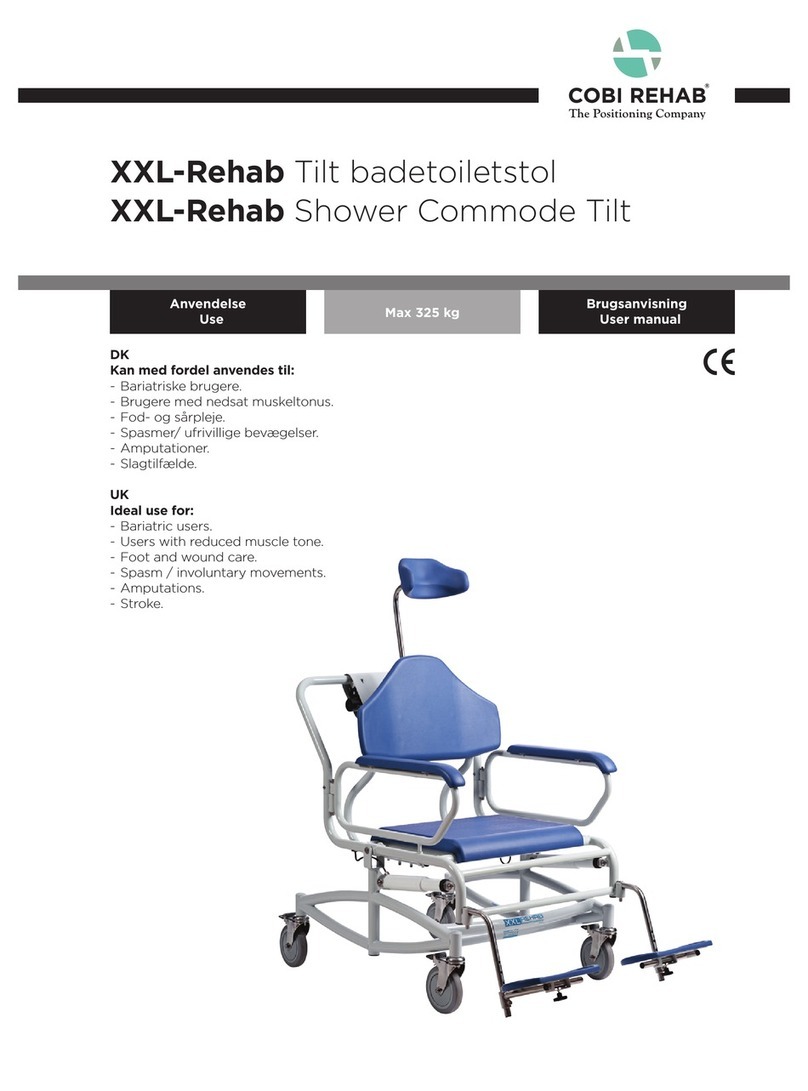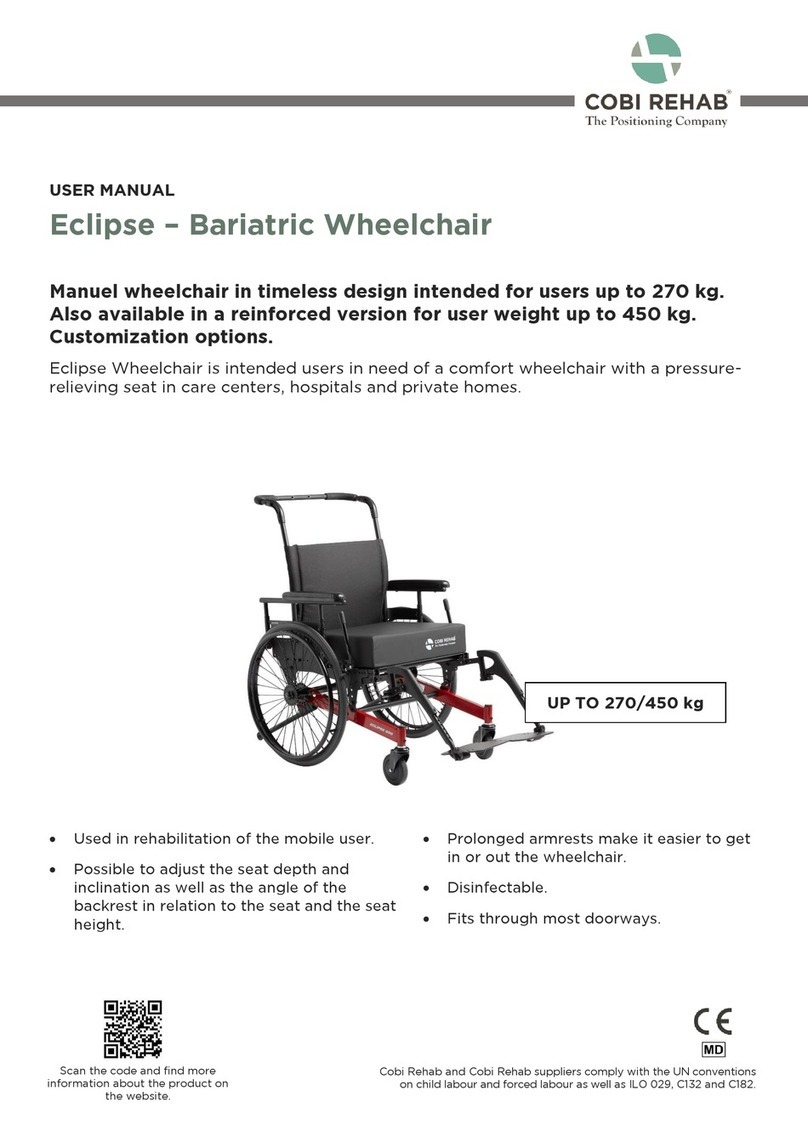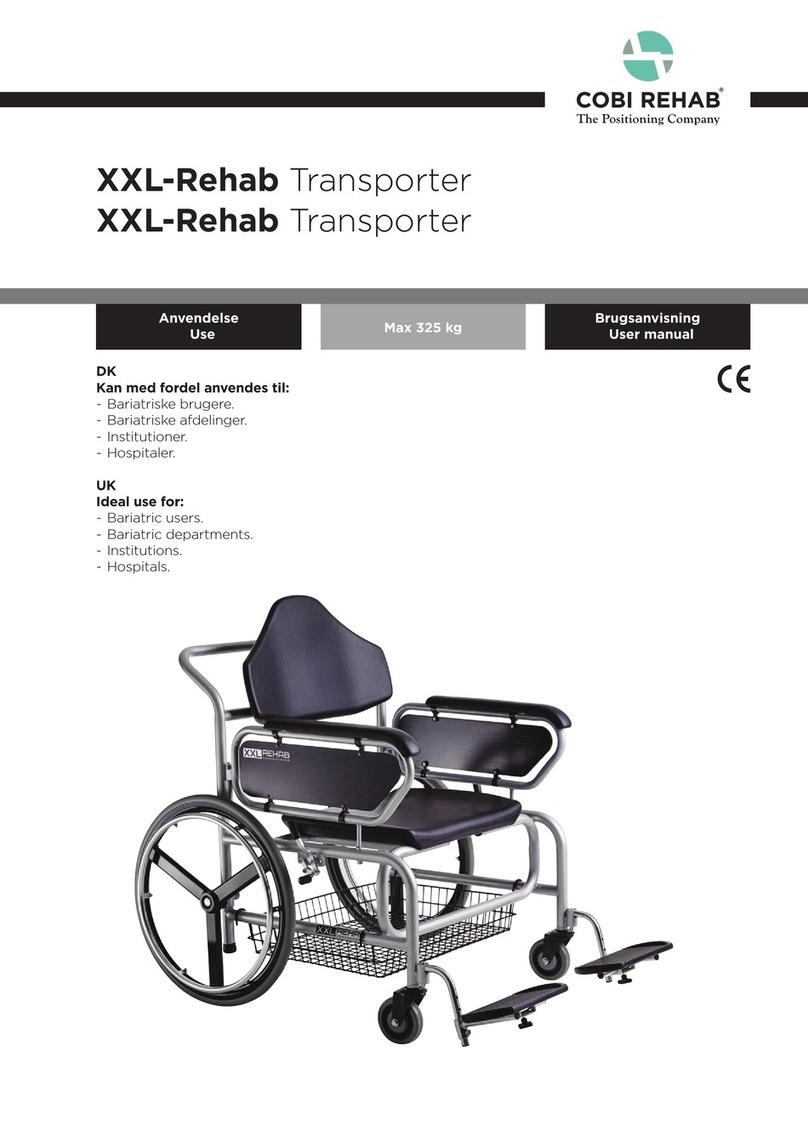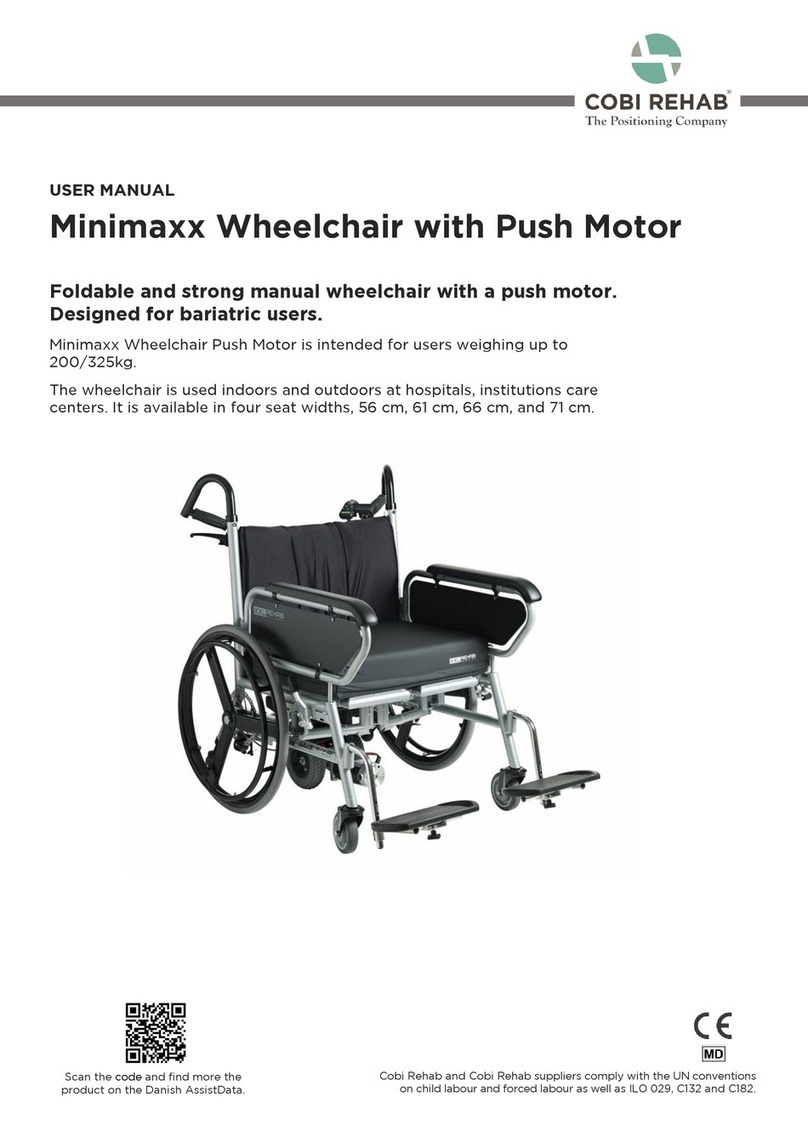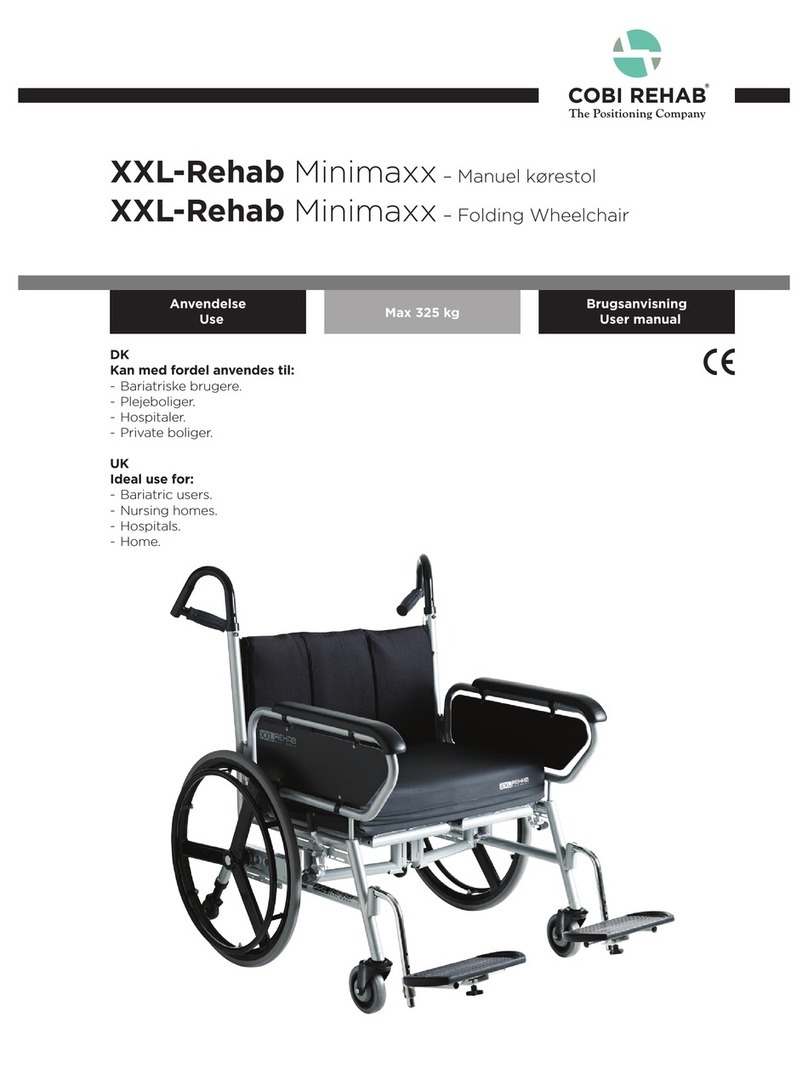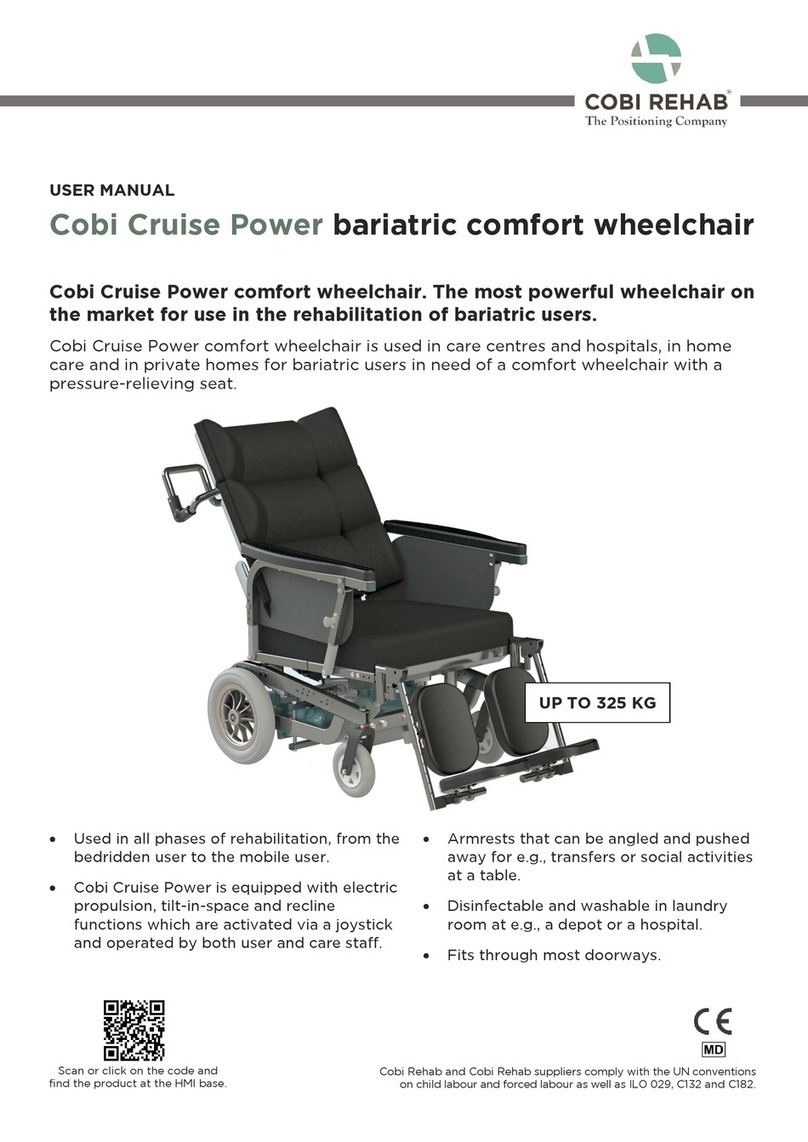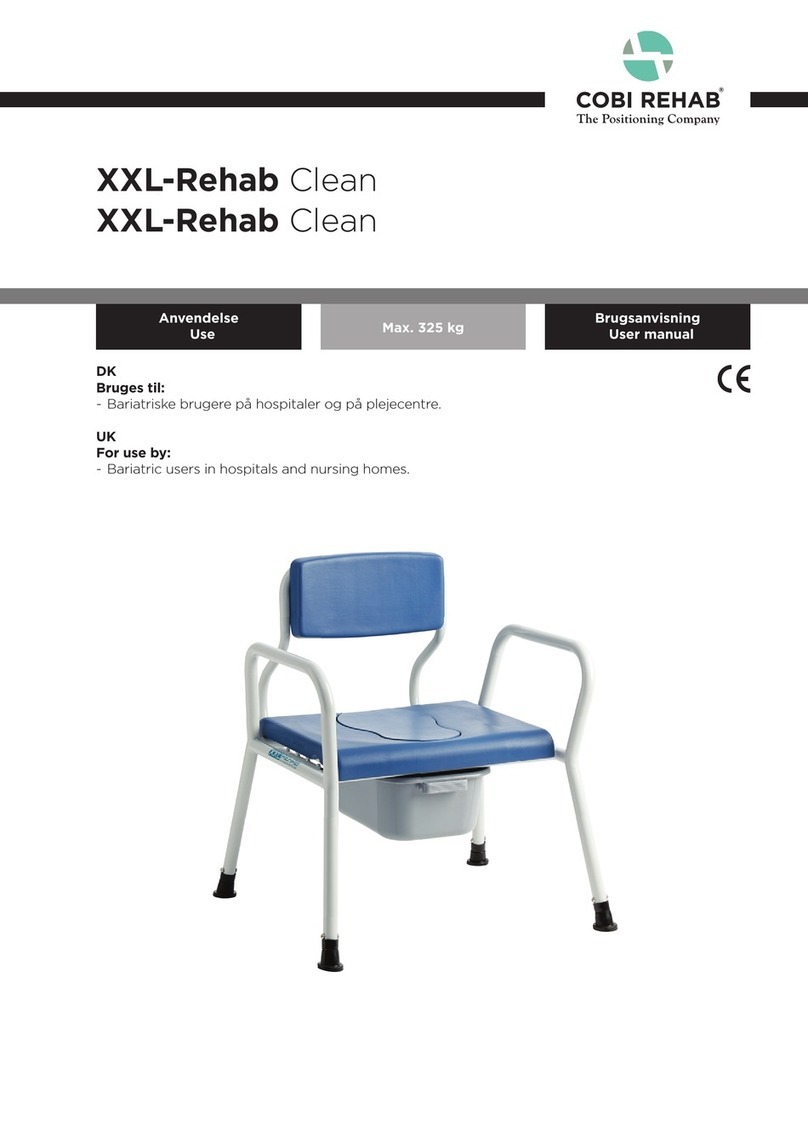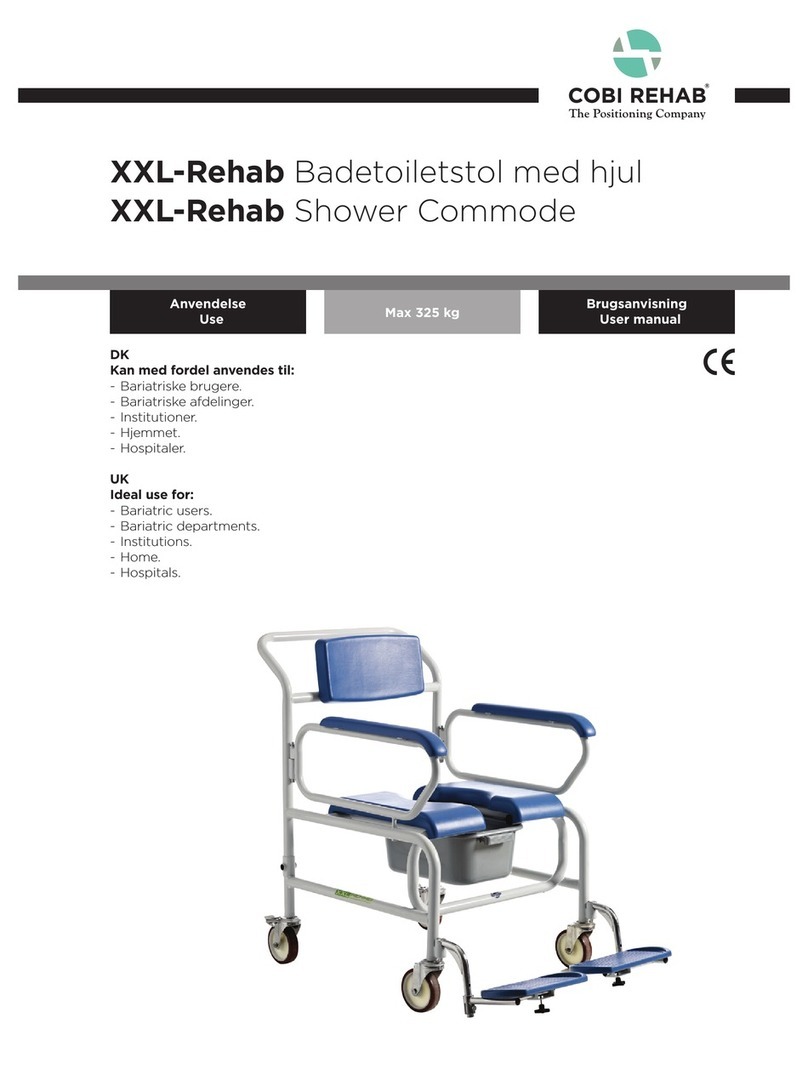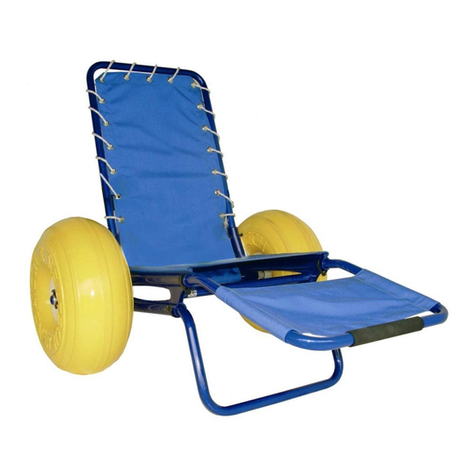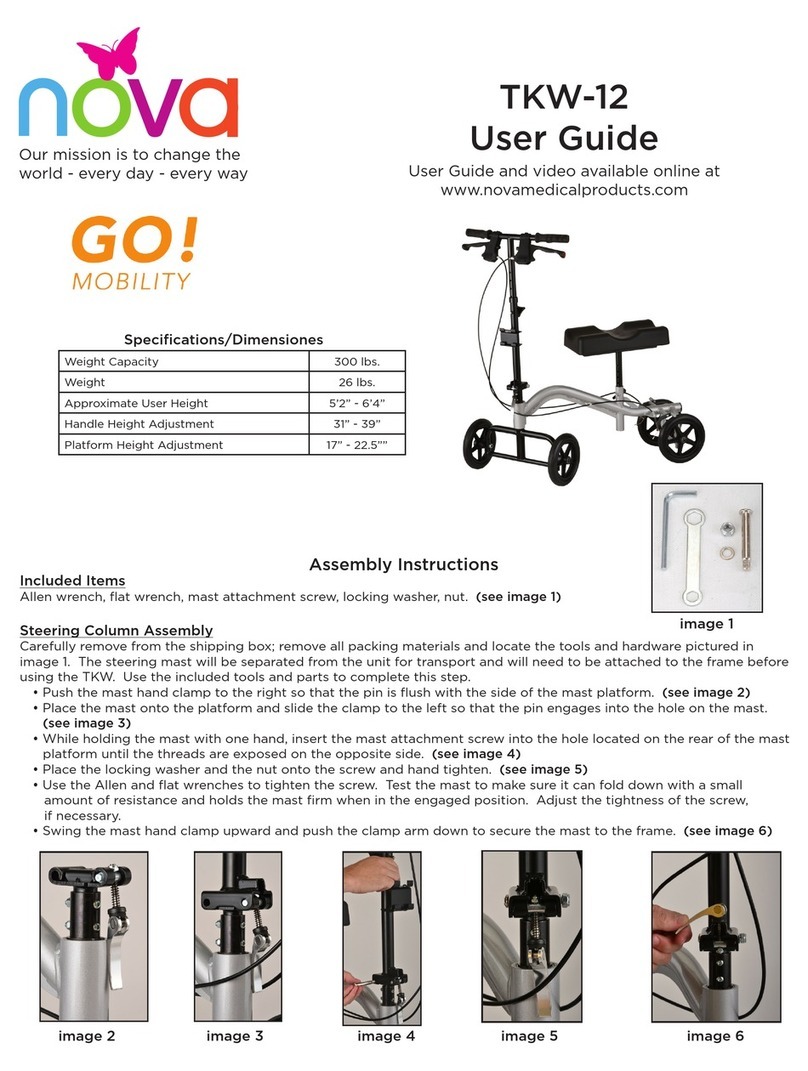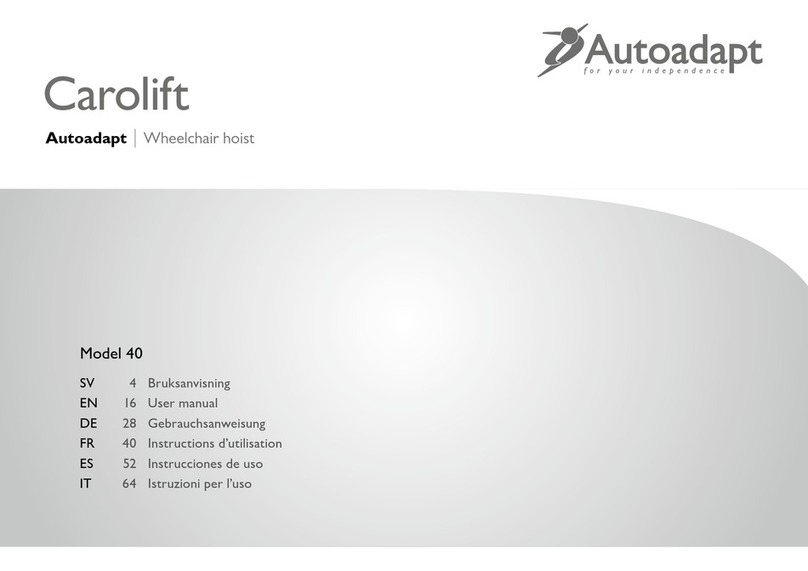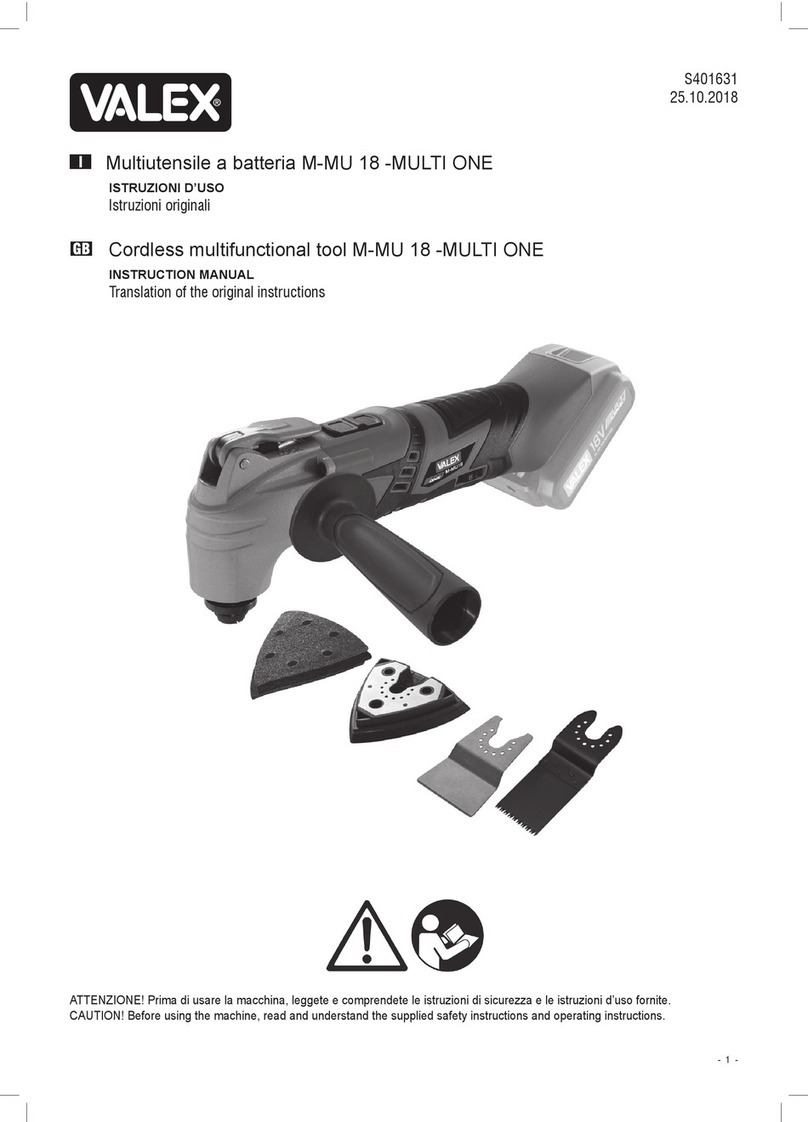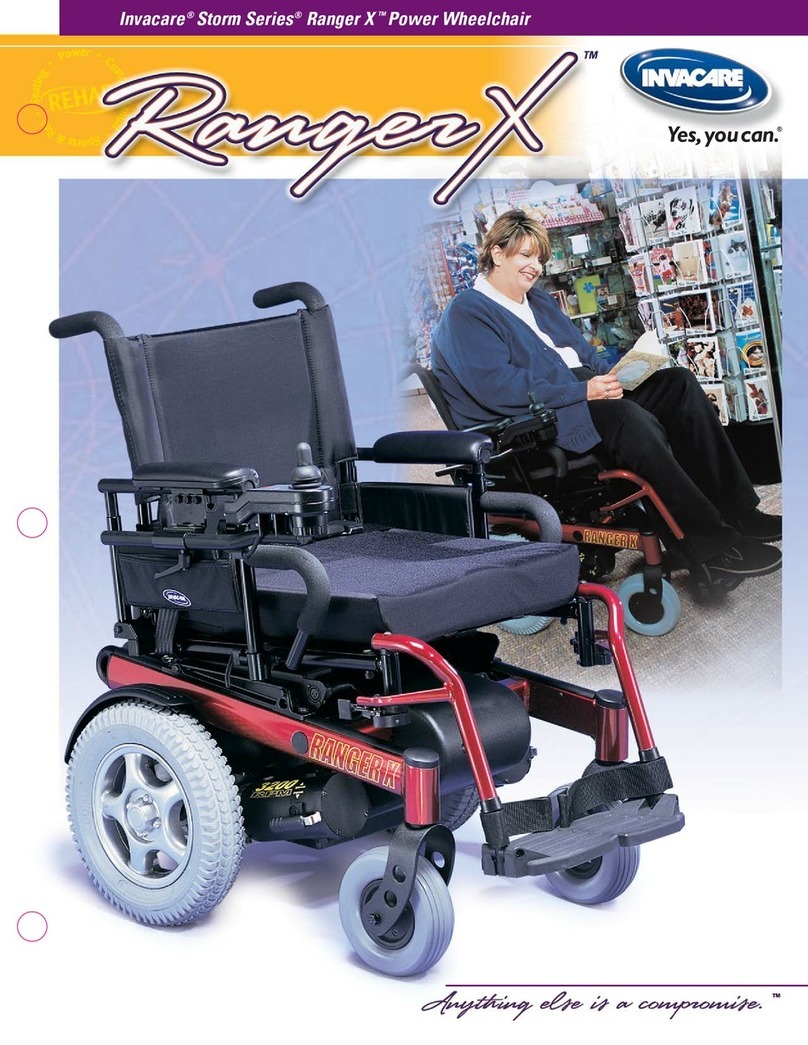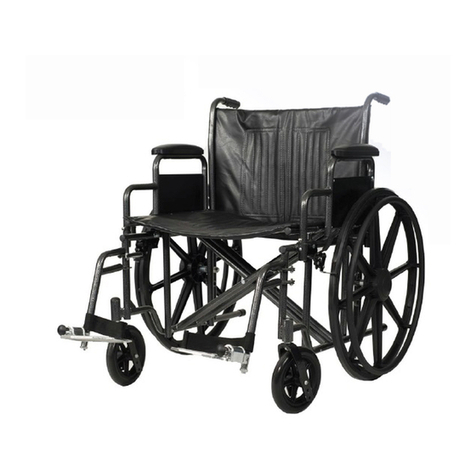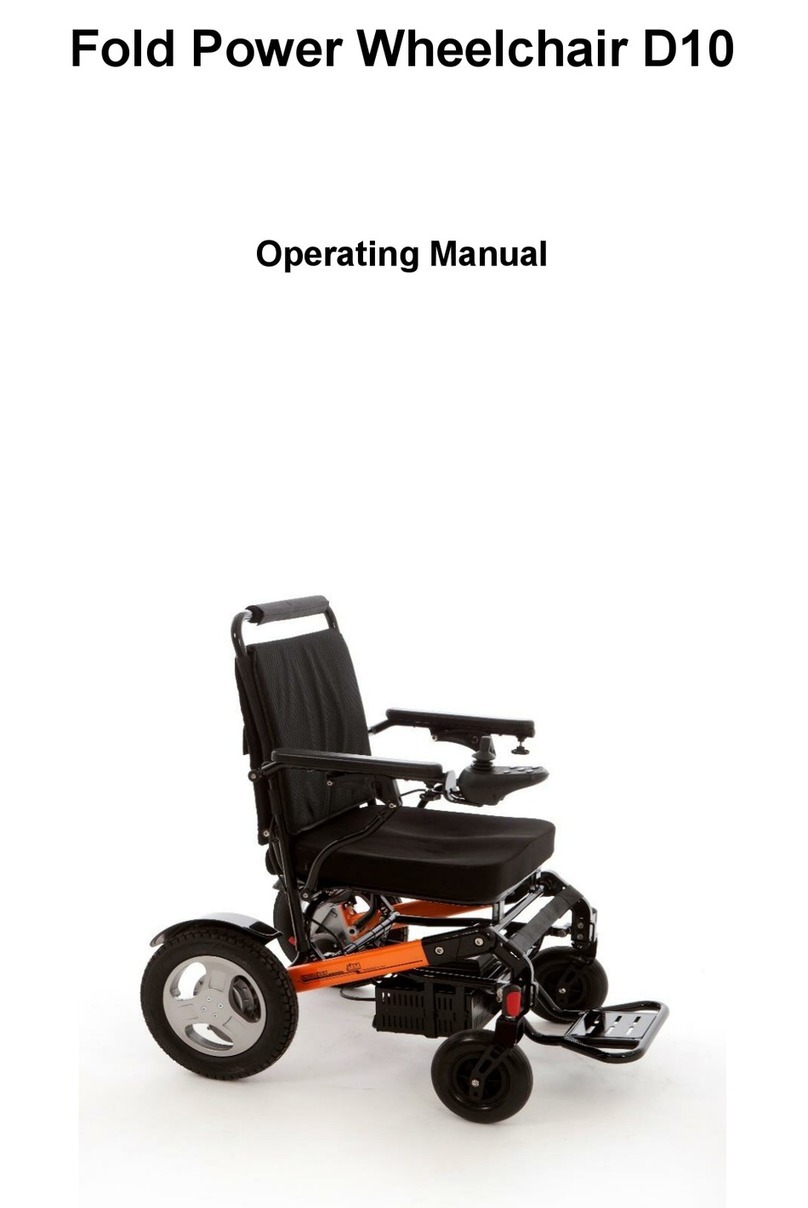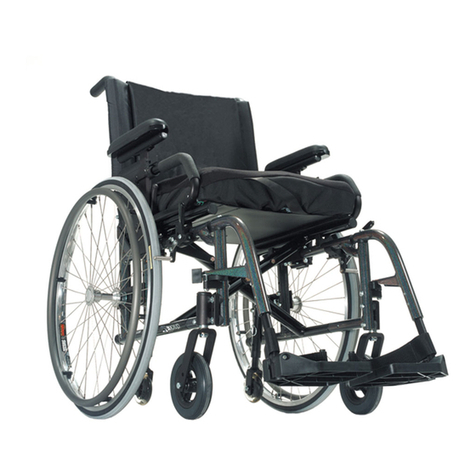6 | USER MANUAL | H2O wheelchair cushion
The amount of water is carefully matched to the size of the
cushion. The weight of the elements varies depending on
the size of the cushion. The weight range for the elements:
seat width 40-45 cm is 0.9 - 1.35 kg. From seat width 50 cm
and above 1.58 kg. This ensures optimum seating comfort
and pressure distribution without compromising stability.
Overview of cushion parts – seen from below and above:
Daily maintenance is minimal.
Developed and produced in Denmark based on experience
from various positioning experts.
NOTE: A label and washing instructions are sewn within
the cushion cover.
Description of cover
The cushion is available with either a comfort case or an in-
continence cover. Both pillow covers have a base consisting
of a slip-proof material and both are multi-stretch.
Before use
Inspection of cushion and wheelchair
When you sit down for longer period of time, the pressure is
highest on your sit bones. Here you run the greatest risk of
developing pressure sores. Therefore, the cushion consists
of a fitted foam base with a hole in the back in which the
water cells can be placed at the spot where the sit bones
sink down. This distributes pressure across the entire sitting
surface, and the water cells are also designed to offset the
pressure as much as possible. Therefore, it is important that
the cushion size is correct and that it fits the wheelchair. The
cushion must be placed correctly in the chair. The wheel-
chair’s footrests and armrests are adjusted if necessary, so
that the user’s legs are resting on the front edge of the pil-
low. This distributes the pressure to the entire cushion, thus
reducing the pressure on the sit bones.
Furthermore, always ensure that the cushion is properly pla-
ced in the wheelchair. The cushion is placed on the wheel-
chair’s seat with the water cells facing up and back and with
the foam base facing forward.
Check that the cushion has the proper size and that it fits
the wheelchair.
Cushion cover
Remember to make sure the cover is properly fitted on the
cushion according to the instructions found on the cover.
Always make sure that the cushion is facing correctly in re-
lation to the indication sticker on the cover. Place the cover
on the cushion so the slip-proof material is on the bottom
facing the wheelchair and that the zipper opening is facing
backwards.
With normal use, we recommend you replace the outer
cushion cover once a year. Intensive or incorrect use may
significantly shorten the service life of the cushion cover.
Do not place any further layers or padding between the
cushion and the user as this may reduce the effect of the
cushion.
Note: Use the cover together with the cushion. For op-
timal function, the cushion should always be fitted with an
outer cushion cover.
During use
Observation of the user’s skin during use of a new cushion
When starting with a new cushion, it is important to keep
a close eye on the user’s skin the first couple of days. If
redness develops in the skin, the user should stop using
the cushion and contact a therapist or dealer for further
instructions and help.
If the cushion has been dropped
The cushion should be checked regularly for damage to the
case and the content of the cushion. It should especially be
checked if it has been dropped, as the cushion may have
been damaged or the water cells may have been displaced.
If the cushion has been dropped, check the position of
the water cells. Also check that the individual water cells are
not deformed or displaced. If all parts are intact, put them
back in place and make sure the surface of the water cells
is flat.
In case of leakage
In case of leakage, where liquid is leaking from the water
cell and the water comes in contact with the user’s skin,
wash the user, change their clothes and watch for any skin
irritation. Parts from the cushion must be washed and dried
before being used again.
Inspect the cushion on a regular basis to ensure that the
cushion and the cover are properly oriented and inspect if
the cushion is wet or damaged.
Do not attempt to use the cushion when the user is sit-
ting on it.
Water cell; connecting piece
faces down underneath, at
the back and out to the side
Top of water cell
Black wedge for placement
under water cell as needed
for positioning
Front of foam frame
Black wedge for placement
under water cell as needed
for positioning
Back of foam frame
Bottom
